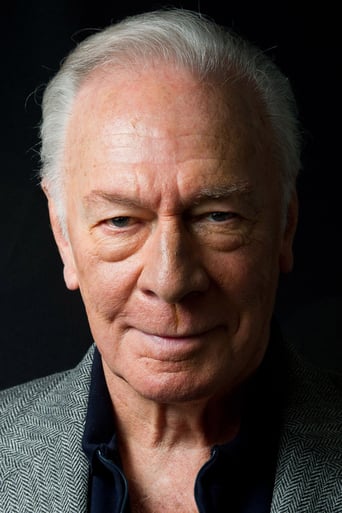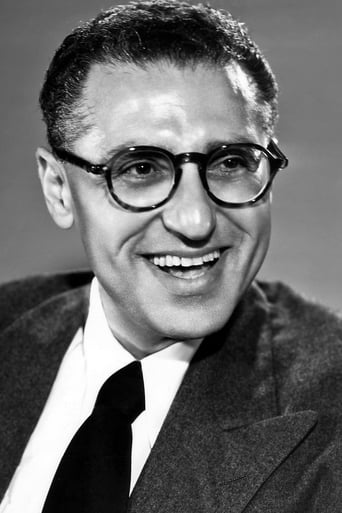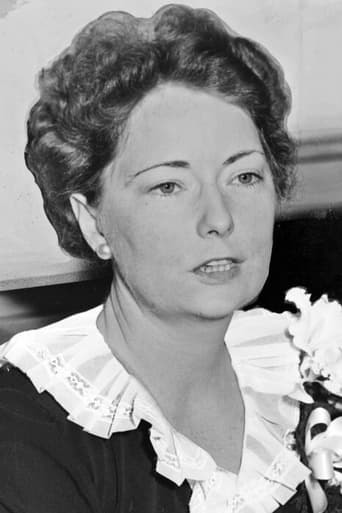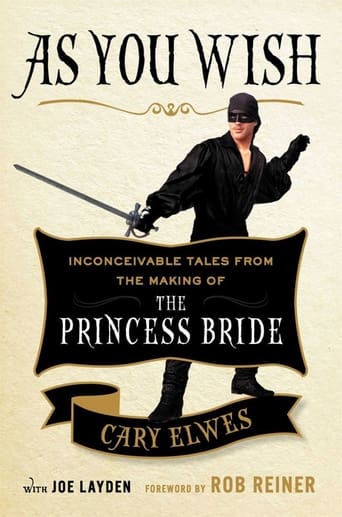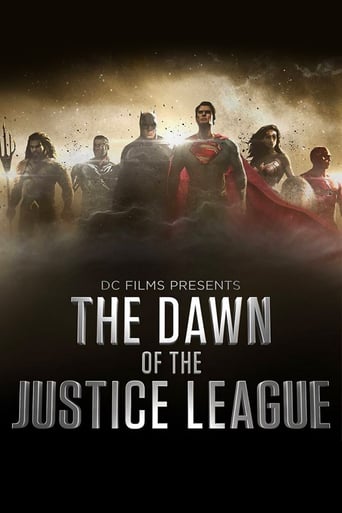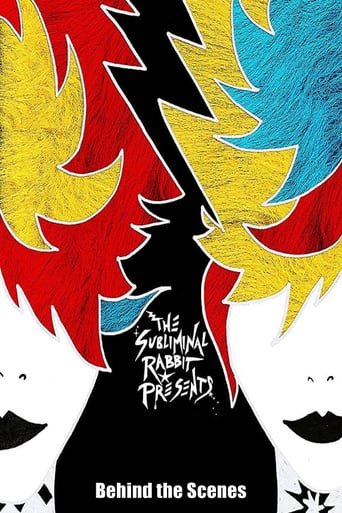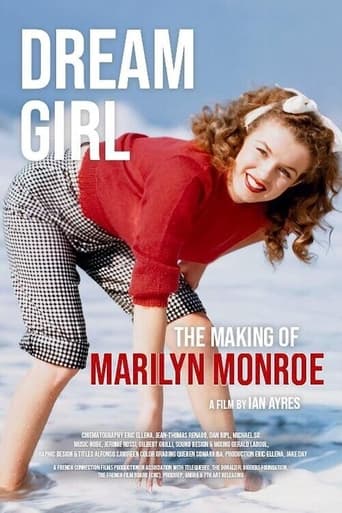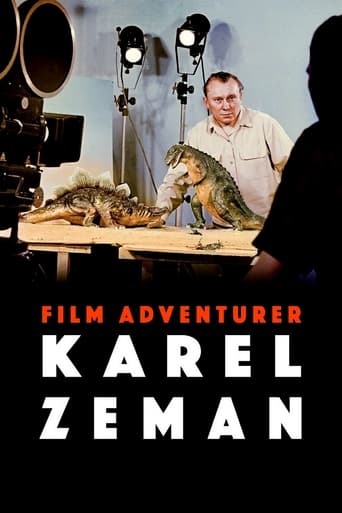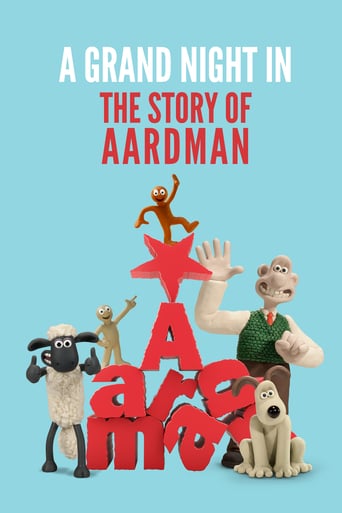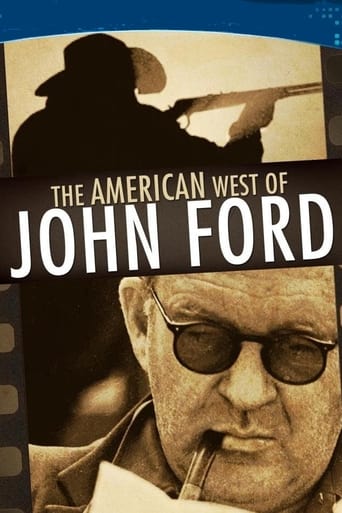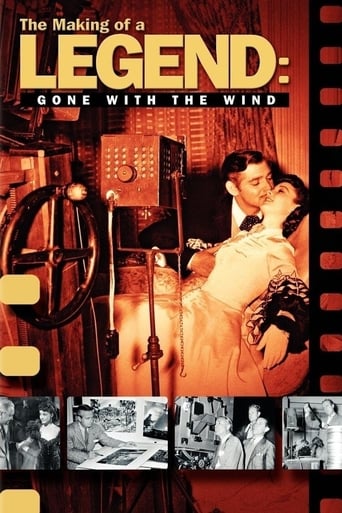
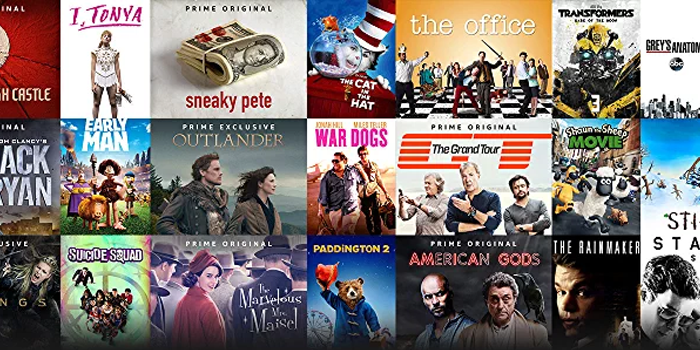
The Making of a Legend: Gone with the Wind (1988)
This documentary revisits the making of Gone with the Wind via archival footage, screen tests, insightful interviews and rare film footage.
Watch Trailer
Cast


Similar titles
Reviews
Must See Movie...
This is a coming of age storyline that you've seen in one form or another for decades. It takes a truly unique voice to make yet another one worth watching.
By the time the dramatic fireworks start popping off, each one feels earned.
Very good movie overall, highly recommended. Most of the negative reviews don't have any merit and are all pollitically based. Give this movie a chance at least, and it might give you a different perspective.
The Making Of A Legend: Gone With The Wind (1989): Starring the narrator Christopher Plummer, the voices of L. Jeffrey Selznick, Arthur E. Arling, Katherine Brown, Arthur Fellows, Ann Rutherford, Evelyn Keyes, Butterfly McQueen, Raymond A. Klune, James E. Newcom, Marcella Rabwin, Harry L. Wolf and the Archive Footage of Margaret Mitchell, David O. Selznick, Vivien Leigh, Clark Gable, Olivia De Havilland, Leslie Howard, Hattie McDaniel, Oscar Polk, Carole Lombard, Paulette Goddard, Susan Hayward, Jean Arthur, Tallulah Bankhead, Joan Bennett, George Cukor, Victor Fleming......Director David Hinton.This is director David Hinton's magnificent 1989 documentary about the making of the 1939 Oscar winning epic "Gone With The Wind", still considered by many to be the greatest film of the 20th century. Hinton's documentary first aired on PBS/KCET around 1990 and is now a bonus feature in the new Gone With The Wind 4-disc DVD Collector's Edition. This is a long, wonderfully detailed documentary that takes the viewers back to late 30's Hollywood for a step-by-step look at the making of this beloved American movie classic. For the most devote "Wind" fan, this is a huge treat. Veteran actor Christopher Plummer (The Sound of Music) provides the narration and Max Steiner's enchanting score for the film plays in the background. The film was the product of ambitious director David O. Selznick, who bought the rights from Atlanta author Margaret Mitchell, whose Pulitzer prize winning novel had sold millions. We see into the lives of the prominent forces behind the film- Selznick, Mitchell, the principal actors, namely Vivien Leigh and Clark Gable, as well as the buzz around the film. Selznick pulled one of the greatest publicity stunts of the time. He had cast Hollywood newcomer Vivien Leigh as Scarlett but still continued to deceive the public into thinking the perfect Scarlett had not yet been found. Because Scarlett O'Hara was the most coveted movie role for an actress in the late 30's, several brand name and no-name actresses were considered for the role and auditioned, including top choices Bette Davis (who received her second Oscar for the '38 film "Jezebel" in a similar role to Scarlett), Paulette Goddard who was chummy with the director, Katherine Hepburn, Southern-born Tallulah Bankhead, Miriam Hopkins (who had performed the Broadway play Jezebel) Joan Bennett, Susan Hayward, Lana Turner, Jean Arthur, even Lucille Ball. We watch as Vivien Leigh and her soon-to-be husband Laurence Olivier journey from England to Hollywood, hoping to land the role she was born to play. We watch as production is besieged with several problems including the chaotic use of three different-minded directors (Cukor, Wood and Fleming), difficulties with actors and directors including Gable's clash with Cukor, censorship and Hay's Code problems with Gable's infamous use of the word "damn" in the final scene and faulty, early Technicolor process. Finally, after two long years of filming, "The Wind" sweeps Atlanta for its December premiere in the grandest spectacle the town had ever seen, never mind the onset of World War II just around the corner. It swept the Oscars in 1940, earning Selznick, Leigh and Hattie McDaniel their Oscars. Selznick would never make a greater film. His tomb reads "Director of Gone With The Wind". We see interviews with actresses Evelyn Keyes and Ann Rutherford (Suellen and Careen, Scarlett's sisters) and Butterfly McQueen (Prissy) who was still alive to comment on the film but who would die tragically in 1995. We watch as the film remains popular years afterward and when the remaining cast attends the 1961 Civil War Centennial and we learn about the tragic deaths of Leslie Howard, Clark Gable and Margaret Mitchell. America would see re-releases of the movie throughout the years, even well into the late 90's. This documentary strips the romantic glamor of the film to reveal it was just as difficult to make as any expensive film then and now. But the documentary honors the great film as a work of art, a film that will be loved for years to come. Gone With The Wind fans will cherish this priceless documentary. It is a film that represented the zenith of old Hollywood movie-making, a film based on a great American novel which still captures the imagination of modern-day audiences. Return to Tara with Vivien Leigh and Clark Gable, watch as we learn how Atlanta fell in a studio back lot which was once the set of "King Kong", watch as an obscure English girl reaches film immortality, watch the first black actress win her Oscar, learn the cold facts about the movie, look behind the scenes to discover beauty born out of madness and mayhem and watch as a legendary movie comes to glorious life. Enjoy!!
Outstanding documentary dealing with the trials and tribulations of making this 1939 monumental pictures.There were plenty of problems in production, casting,etc. Who knew that Paulette Goddard came so close to playing Scarlett O'Hara or that Jeffrey Lynn was so inadequate in the role of Ashley Wilkes?Made at the time that Hitler and Mussolini were menacing Europe, there is plenty of backstage gossip.David O. Selznick was a brilliant producer. His on screen disagreements with famed director George Cukor led to the latter leaving the film. The writing of Margaret Mitchell's classic book for motion picture viewing was memorably discussed.It was wonderful seeing many of the cast members participate in this wonderful documentary.Hattie McDaniel's supporting Oscar's acceptance speech must serve as an inspiration to us all. Like so many in the memorable cast, she left us way too young.
David O. Selznik, one of the most successful producers in the Hollywood of the 1930s, probably never considered what he was getting into, when he decided to bring Margaret Mitchell's massive novel, "Gone with the Wind", to the movies. The monumental task to recreate the book, which was a favorite among the American public of the era, was not an easy, or a happy undertaking by Mr. Selznik, or the people that were involved in the project.David Hinton's documentary, which was shown by TCM recently, is a gem of a film because it gives a fantastic account of all that went on to make the film. "Gone with the Wind" stories have been told forever, or so it seems, yet, in the documentary they are examined thoroughly again by a lot of Mr. Selznik's collaborators who were still around in 1989 to tell the story.The best thing in "Making of a Legend: Gone with the Wind" is the footage where many stars were tested for the leading roles. The characters of the book were coveted by most of the actors of the time because they realized the importance about appearing in it would mean to their careers. We see actors of the stature of Jean Arthur, Joan Bennett, Tallulah Bankhead, among the ones that wanted to contribute to the movie, yet, they were not chosen.David O. Selznik comes across as a disorganized genius who had no idea about what he was doing. His memos to the cast and crew were something not to be believed. Some people resented this way of communication. His battle with George Cukor is also told and how Victor Fleming, who by all accounts was not the perfect candidate, came to be the one that was able to complete the picture.There are some excellent comments, especially from Ann Rutherford and Evelyn Keyes, who explain what they saw while the film was in production. Some others also come on to tell us their view about what the film changed their lives and the experience of having worked with a mad man who was so intent in getting the movie done. It's a good thing this film was done during the 1930s because it would probably had cost more than 200 million in today's dollars! Thanks to director David Hinton this epic movie is examined and put in its proper context to help the viewer understand the way Hollywood worked during the time it decided to convert the book into a movie.
Selznick himself would have given his highest rating of approval to this fascinating documentary which traces the birth of the Margaret Mitchell novel through its publication and on to Hollywood, where it became a major chore for David O. Selznick to wittle the 1,000 page novel into a workable screenplay. Selznick's work habits are examined at length and the kind of stress his perfectionist behavior gave everyone around him is understandable. But his persistence paid off and, of course, the end result was all anyone could hope for.Having read many books on this subject, I can assure you this is a project that is well worth viewing for anyone who has more than a passing interest in the making of the film. There are some interesting and revealing comments by George Cukor, the original director on the film who was fired after a few weeks of filming but still remained on good terms with Selznick after Victor Fleming took over.Most interesting aspect are a series of tests made by various actors and actresses under consideration for roles--most of whom were highly unsuitable if the tests are to be taken seriously.Missing among the cast members who speak about the film is Olivia de Havilland, who was probably too heavily involved in personal matters at the time this was being put together and could not find time to make her contribution--which would have been a significant one. Fortunately, she turned up for last year's DVD release of the film in a segment called "Melanie Remembers". But Evelyn Keyes and Ann Rutherford do a nice job of describing some behind-the-scenes events as well as the initial premiere of the film in Keyes' home town of Atlanta. Butterfly McQueen recalls what it was like to play Prissy.Excellent commentary by Christopher Plummer is a definite plus, and the well written script gives the viewer a complete feeling of what it was like for everyone involved in the making of this great classic. By the time it reaches the film's world premiere reaction, you will be thoroughly involved and entertained by the interesting presentation of facts. As an added bonus, much of the documentary is accompanied by selections from Max Steiner's massive score.Summing up: A documentary you can't afford to miss.


